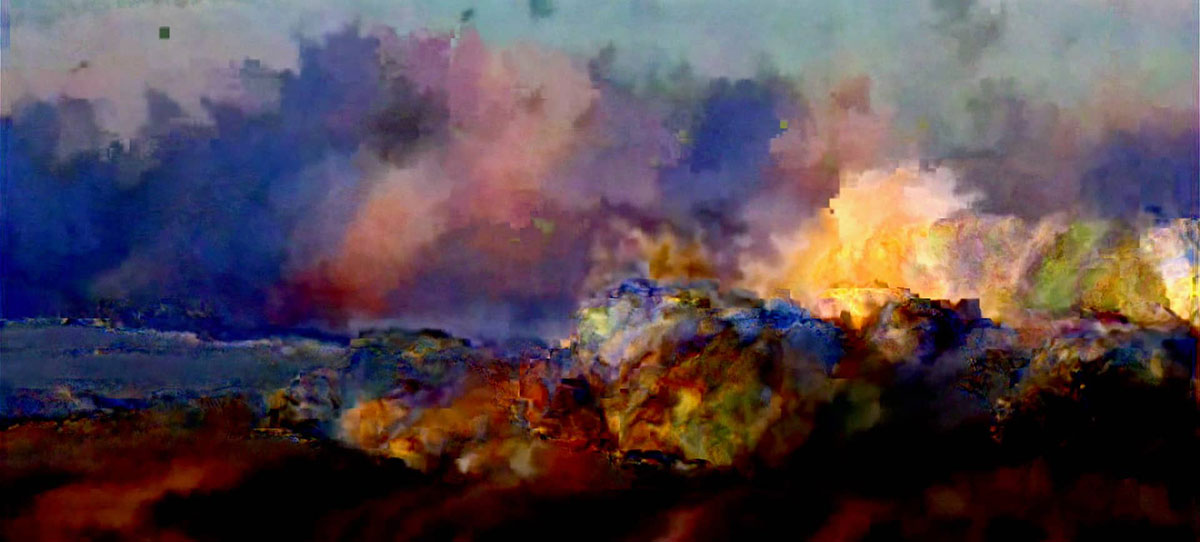Identity Construction in Abstract Animation
Tuesday, July 2. 2019 – 17:00 @ Blickle Kino / Belvedere 21, 62 min
Curated by Noel Palazzo
With the advent of photography around the 1850s, painters had to reconsider the relevance of their work as creators of faithful representations of reality. They began to express themselves more evidently through the very act of painting, exploring the materials, the stroke, the light, and the formal and colour compositions. In this slow process -which gives rise to modern art- the focus of attention in the artistic act shifts from the resulting work to the artist itself, shining a light into the creator’s own psyche and passions. Thus, every new work offers a new glimpse into the creator’s identity.

Film still: ONEIRIA – Jeroen Cluckers
How do contemporary abstract artists and animators create Identity? Here is where the medium fully becomes the message; where pure light, motion and sound are turned into metaphors for the fluid state of things and the persistent illusion of identity. In modern art, it is up to the audience to build meaning based on metaphors suggested by the artist. But the thin line between the creator’s intention and the viewer’s interpretation is most malleable in the realm of abstract art. This particular artform won’t give you anything you don’t want to receive. It won’t suggest anything you don’t wish to discover. Therefore, the abstract artist not only reveals her/himself through the work, but raises each viewer to the level of co-creator. Experiencing the work can expose aspects of ourselves that we might have forgotten or fully ignored.
For abstract artists, Identity seems to be that which persists and still IS the Thing or the Person after you’ve removed all secondary effects. Abstract animation is the main tool used not only by artists, but also physicists, biologists and data analysts to try and depict this elusive, ungraspable aspect that underlies our everyday experience. Many abstract artists also try to depict visually that which is invisible; things we can sense, feel or conceive with any part of our bodies except our eyes. As when envisioning cyclical time, this notion of giving form to that which is invisible, is thoroughly explored in abstract animation in its relation to rhythm, tone and melody. This is the origin of Visual Music, envisioned already in the abstract paintings of Kandinsky or Klee, for example. It allows us to visualize and share with others the physical identity of sound, matter, time, pulse, or simply empty space.
Abstract art and animation appeal to the essential part of our beings that makes us human: the part which creates metaphors and finds delight in mystery.
The following screening, which complements Palazzo’s talk EYE FIDELITY, features 21 abstract short films exploring identity creation from very different approaches.

